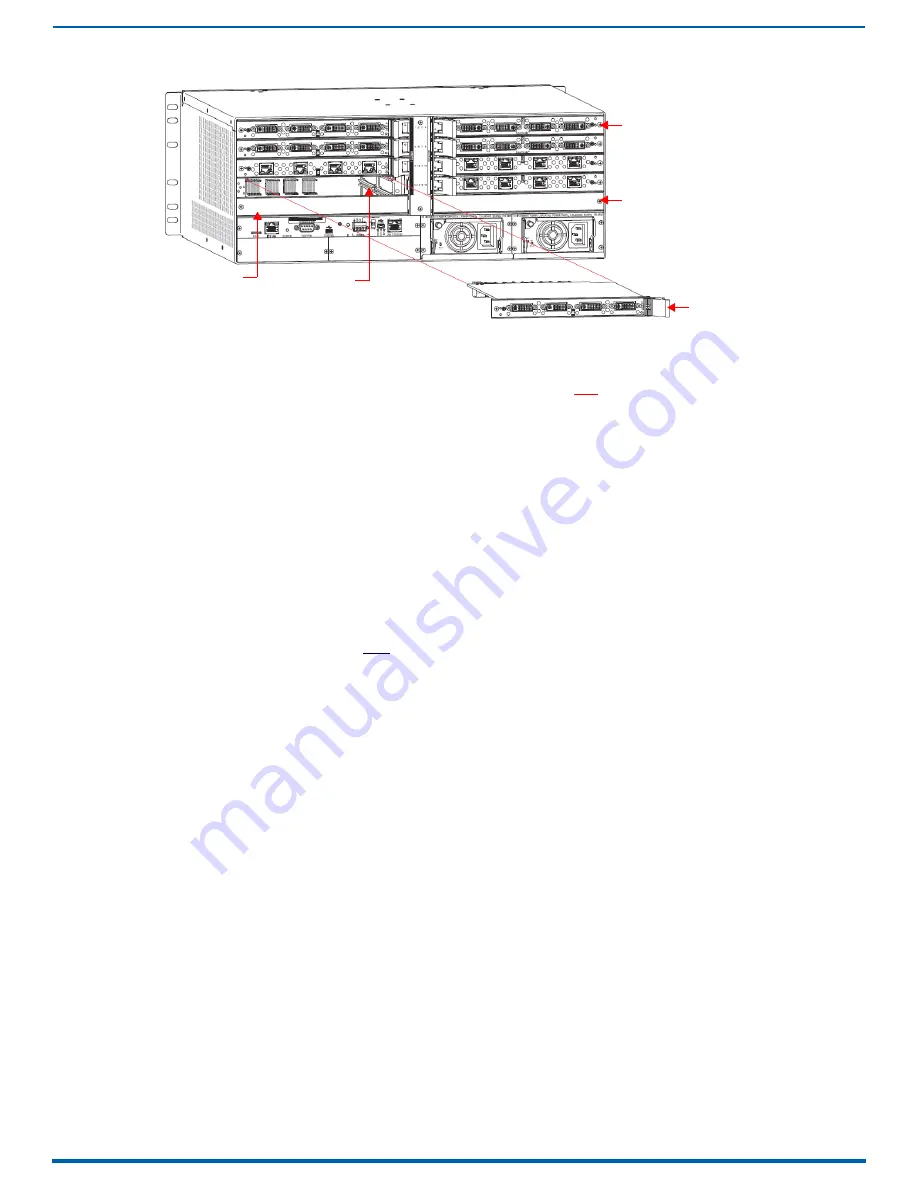
Appendix A - Adding or Replacing Boards
242
Enova Digital Media Switchers - Hardware Reference Manual
b.
Place the board in an ESD approved static shield bag and set aside.
CAUTION:
Each Enova DGX board has an EMI gasket along one edge of the faceplate. Handle the boards carefully to
avoid dislodging or damaging the gasket on the board being installed and the gasket on the adjacent board or blank
plate.
CAUTION:
For DXLink Fiber Boards, do not remove dust plugs from their fiber connectors until Step 12.
4.
Audio Switching Boards (ASB and ASB-DAN) only
–
Do not install in enclosure with AIE boards.
Must be installed in pairs.
Must be installed in expansion slots.
Enova DGX 6400 only – Be sure to install all four boards in correct expansion slots.
For Enova DGX 800/1600/3200 systems only – Attach HSSI cable from SMA port on ASB Input Board to SMA port on
ASB Output Board.
5.
Audio Insert/Extract Boards only
– See page 187 for information on setting the DIP switches to configure the insert/
extract functionality.
Flip the DIP switch for each connector that needs its setting changed.
Write down the setting for each connector to make verifying correct audio switching behavior easier in Step 14.
AIE Boards can only be installed in an expansion slot.
NOTE:
Unused AIE connectors must be set to Disable/Extract.
6.
Install vertical boards
– With the board’s extractor handle in the extended (unlocked) position, line up the board’s
edges on the board guides that are along the top and bottom of the board slot,
- or -
Install horizontal boards
– With the board’s extractor handle in the extended (unlocked) position, line up the board’s
edges on the board guides that are along the left and right of the board slot. Note that input boards have board
guides at the top of the slot and board guides for the output boards are at the bottom of the slot due to their
reversed orientation in the enclosure.
7.
Begin pushing the board into the slot until the extractor handle starts to engage the metal extractor plate (the
extractor handle moves into its folded position). When the extractor handle starts to lift, flip the handle toward the
center of the board until it snaps into its folded (locked) position, which firmly seats the board.
8.
Fasten the screw (which was removed in Step 4) that holds the board in place. This screw
must
be tightened securely
before cables are attached in Step 12.
9.
If the enclosure was powered down – Plug the AC power cords back into the power supplies.
10.
Verify that the system recognizes the board:
a.
Launch the System Configuration interface
b.
Navigate to the Switcher/Status page.
c.
Scroll down to the Input or Output Board slot number of the new board. Audio boards will be listed under
"expansion boards."
d.
Ensure that the board’s Status is "OK" and that the Type field is correct.
e.
If the fields do not reflect the board you have inserted, or the board Status states "FAIL," re-seat the board and
check the Status page again.
f.
If the firmware version on a board does not match the enclosure (indicated with an asterisk in the Version
column), download the latest .kit file and send it to the enclosure (instructions on page 203).
NOTE:
If using a cable management bar, tie the cable to the cable management bar far enough below the
connector to allow for the manufacturers recommended bend radius.
FIG. 131
Horizontal board removal (DGX 800/1600/6400)
Expansion slot
Board guides
Expansion slot
One screw holds each board or board
plate in place
Board extractor handle
(push to release)
Board guides






























